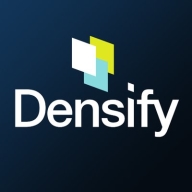

Densify and AWS Trusted Advisor compete in cloud optimization. AWS Trusted Advisor seems to have an advantage due to its feature integration with AWS services.
Features: Densify provides advanced optimization capabilities, delivering granular insights and recommendations for resource management, cloud performance optimization, and real-time analytics. AWS Trusted Advisor offers a comprehensive suite of features integrated with AWS, providing best practice insights, service limit advice, and cost optimization suggestions.
Ease of Deployment and Customer Service: Densify has a flexible deployment model with robust customer service, adaptable across various cloud environments. AWS Trusted Advisor is natively embedded within AWS, offering straightforward deployment for AWS users.
Pricing and ROI: Densify provides competitive pricing with strong ROI through detailed cloud analysis and optimization outcomes. AWS Trusted Advisor is cost-effective for AWS customers, often included at no extra charge with Business or Enterprise support levels.
| Product | Market Share (%) |
|---|---|
| AWS Trusted Advisor | 1.0% |
| Densify | 0.9% |
| Other | 98.1% |


| Company Size | Count |
|---|---|
| Small Business | 5 |
| Large Enterprise | 3 |
| Company Size | Count |
|---|---|
| Small Business | 1 |
| Midsize Enterprise | 1 |
| Large Enterprise | 9 |
AWS Trusted Advisor is your customized cloud expert! It helps you to observe best practices for the use of AWS by inspecting your AWS environment with an eye toward saving money, improving system performance and reliability, and closing security gaps.
Densify is a hybrid cloud and container resource management platform that makes workloads self-aware of their precise resource requirements and automates the resource management and selection process. This solution helps you control your cloud spend and also helps your apps perform and scale better. Densify enables you to match your cloud requirements with the optimal cloud supply. Additionally, Densify is the only technology that leverages patented, predictive machine learning-powered analytics to perform advanced modeling of workload patterns, and provide precise optimization directives. It is ideal for cloud engineers, container platform owners, and IT finance.
Densify works by:
Densify Features
Densify has many valuable key features. Some of the most useful ones include:
Densify Benefits
There are many benefits to implementing Densify. Some of the biggest advantages the solution offers include:
We monitor all Cloud Management reviews to prevent fraudulent reviews and keep review quality high. We do not post reviews by company employees or direct competitors. We validate each review for authenticity via cross-reference with LinkedIn, and personal follow-up with the reviewer when necessary.